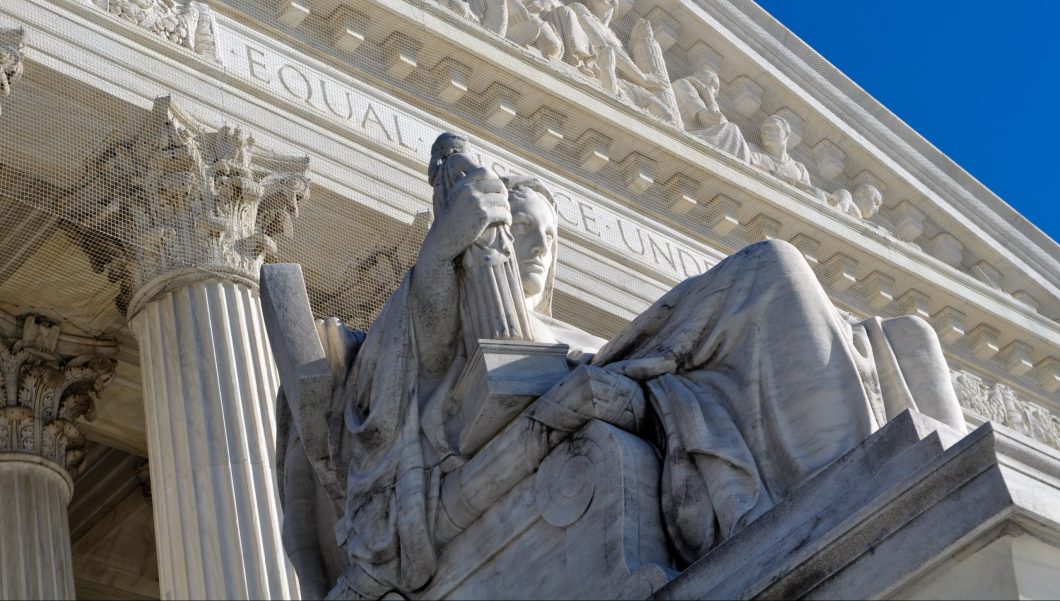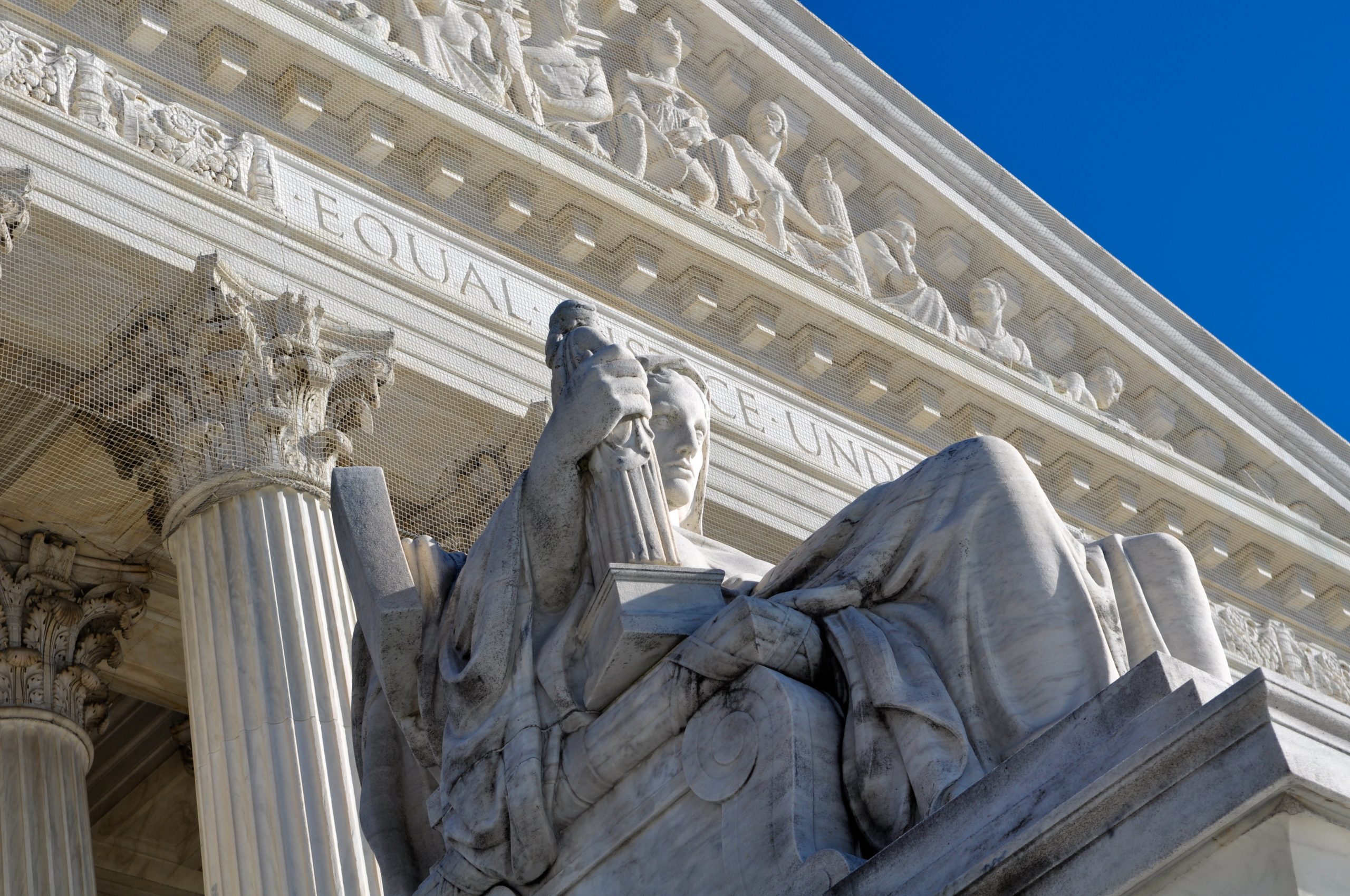When Is "the Law" Violated Under the Constitution, Anyway?
Recently a New York Times headline blared: “McConnell Urges States to Defy U.S. Plan to Cut Greenhouse Gas.” It was the first in a barrage of mainstream media stories to the same effect. Majority Leader Mitch McConnell (R-KY) was telling the states to violate the law! An apalled ranking environmental committee Senator Barbara Boxer (D-CA) said she could not recall another top politician actually “calling on states to disobey the law.”
Apparently Senator Boxer missed a few civics lessons about the separation of powers—the natural tensions not only between the three branches of the federal government, but between the central government and the state governments. Each of the separated powers is allowed to push back, using every legitimate means provided by that document with which she shows so little familiarity: the U.S. Constitution.
James Madison’s Virginia Resolution said precisely that:
The General Assembly doth solemnly appeal to the . . . other states, in confidence that they will concur with this commonwealth in declaring, as it does hereby declare, that the acts aforesaid [the Alien and Sedition Acts], are unconstitutional; and that the necessary and proper measures will be taken by each, for co-operating with this state, in maintaining the Authorities, Rights, and Liberties, referred to the States respectively, or to the people.
Likewise Thomas Jefferson’s Kentucky version:
That this commonwealth does upon the most deliberate reconsideration declare, that the said alien and sedition laws, are in their opinion, palpable violations of the said constitution; and however cheerfully it may be disposed to surrender its opinion to a majority of its sister states in matters of ordinary or doubtful policy; yet, in momentous regulations like the present, which so vitally wound the best rights of the citizen, it would consider a silent acquiescence as highly criminal: That although this commonwealth as a party to the federal compact will bow to the laws of the Union, yet it does at the same time declare, that it will not now, nor ever hereafter, cease to oppose in a constitutional manner, every attempt from what quarter soever offered, to violate that compact.
Actually, Senator McConnell was milder, merely recommending states to:
Think twice before submitting a state [greenhouse gas] plan — which could lock you in to federal enforcement and expose you to lawsuits — when the administration is standing on shaky legal ground and when, without your support, it won’t be able to demonstrate the capacity to carry out such political extremism. Refusing to go along at this time with such an extreme proposed regulation would give the courts time to figure out if it is even legal, and it would give Congress more time to fight back. We’re devising strategies now to do just that. So for now, hold back on the costly process of complying. A better outcome may yet be possible.
To a greater or less extent, almost every President right up to Barack Obama, unilaterally inserting his many exceptions to the Obamacare law, has questioned the mechanical following of “the law.” Andrew Jackson (in the 1832 case of Worcester v. Georgia) and Abraham Lincoln (in the 1861 case of Ex Parte Merryman) refused to enforce Supreme Court decisions they viewed as illegitimate incursions on their executive power.
When is “the law” violated under the Constitution, anyway? That document actually says very little about law. It is mostly about setting the powers and procedures of governmental institutions.
The Article I Section 8 powers of the national government hardly mention law, and even those are specialized laws for unique national functions. Some legal principles are mentioned, such as habeas corpus and against bills of attainder but even the later-added Bill of Rights mostly only specified what the national government should not do. As Madison said in the Federalist Papers, the Constitution set up a “dual” system of national and state institutions where the latter were to do most of the lawmaking, leaving only a few nationwide functions to the central government.
But isn’t it true that the Constitution sets itself as the “supreme law of the land,” with the Supreme Court as its interpreter-cum-umpire whose task is to settle finally what the law is? Well, President Jackson did not think so:
The Congress, the Executive, and the Court must each for itself be guided by its own opinion of the Constitution. Each public officer who takes an oath to support the Constitution swears that he will support it as he understands it, and not as it is understood by others. It is as much the duty of the House of Representatives, of the Senate, and of the President to decide upon the constitutionality of any bill or resolution which may be presented to them for passage or approval as it is of the supreme judges when it may be brought before them for judicial decision. The opinion of the judges has no more authority over Congress than the opinion of Congress has over the judges, and on that point the President is independent of both. The authority of the Supreme Court must not, therefore, be permitted to control the Congress or the Executive when acting in their legislative capacities, but to have only such influence as the force of their reasoning may deserve.
In fact, the different branches of the government have been constantly checking each other’s view of law from the beginning. A classic study by Yale political scientist Robert Dahl[1] demonstrated that Congress often “overruled” Supreme Court decisions when the issue was considered important enough.
Nor is this just ancient history. Congress passed the Civil Rights Restoration Act of 1987, which overturned the 1984 Supreme Court decision in Grove City v. Bell. Four years later, Congress passed the Civil Rights Act of 1991, which overruled five Supreme Court decisions by name. Less direct intra-governmental contests and challenges happen every day. Every year states find new ways to get around the Supreme Court’s religious-display decisions, with Progressive Justice Stephen Breyer finally relenting in Van Orden v. Perry (2005).
States administer many federal laws and state courts get to dispose of federal court decisions. One can be assured that states like Alabama and California interpret them quite differently.
Take a recent decision by Alabama Supreme Court Chief Justice Roy Moore. He ordered probate judges under his supervision not to issue marriage licenses to same-sex couples even though a federal district judge had held Alabama’s law defining marriage as a union between a man and a woman to be unconstitutional and ordered state executive officials to perform gay marriages. As law professor John C. Eastman noted, Moore was widely accused of lawlessness but in fact he was correct about the rules of federal court jurisdiction. The proof of this is the federal judge on the other side of the question scrambling to expand her edict to cover the gap that Moore rightly identified. (She added the relevant judicial probate judge to her order.)
Moreover, in 1972, the Supreme Court set a precedent in Baker v. Nelson upholding marriage only for men and women that to this day binds the federal district judge. A state supreme court would not be required to follow the district judge until the U.S. Supreme Court changed its precedent.
Even if it does so this spring, Eastman responds by quoting President Lincoln against the Court’s egregious slavery decision in Dred Scott v. Sanford (1857):
the candid citizen must confess that if the policy of the Government upon vital questions affecting the whole people is to be irrevocably fixed by decisions of the Supreme Court, the instant they are made in ordinary litigation between parties, in personal actions, the people will have ceased to be their own rulers, having to that extent practically resigned their Government into the hands of that eminent tribunal.
Blame all this institutions-balancing-institutions, this contesting of what the law actually is, on the Founders and their old Constitution. It is all about institutions and no one is in charge. There is balance. There are even two sets of law and most of it is still local. While the Supreme Court may issue precedent-shattering decisions, as on marriage, there is a long road between decision and final result. Federal courts, no matter how they define marriage, will refer it to states, which will actually rewrite their marriage laws themselves.
When the national government is restricted to its enumerated powers and the rest is left to the states or the people, the old Constitution with its complex division of powers has worked. This may confuse the linear Progressive mind, but the U.S. Constitution of divided powers is the longest-lasting basic law in the world. Somehow the legalism built into other systems fails whereas the freedom-preserving institutional separation and division of powers works.
[1] Robert A. Dahl, “Decision-Making in a Democracy: The Supreme Court as a National Policy-Maker,” Journal of Public Law, Fall 1957, pp. 279-93.


